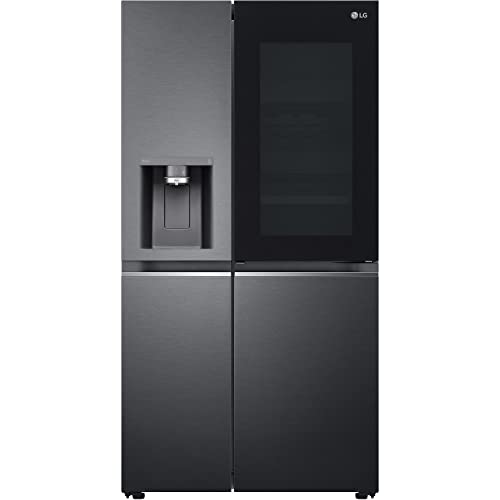The Comprehensive Guide to Refrigerators: Types, Features, and Maintenance
Refrigerators, frequently described as fridges, play a pivotal role in contemporary families by preserving food, decreasing waste, and preserving a comfy living environment. These important kitchen area home appliances have actually evolved substantially for many years in regards to innovation, performance, and style. This short article intends to provide a comprehensive summary of the different types of refrigerators, their functions, and pointers for maintenance, making it an important resource for property owners.
Kinds of Refrigerators
Refrigerators come in different styles and configurations, each accommodating different requirements and choices. Below is an introduction of the most typical types of fridges available on the market today.
| Type of Refrigerator | Description |
|---|---|
| Top-Freezer | This is the classic fridge design where the freezer compartment is located on top. It is typically the most affordable alternative, making it popular for budget-conscious customers. |
| Bottom-Freezer | In this design, the freezer is positioned at the bottom, enabling simple access to fresh products at eye level. This type typically features pull-out drawers for easier organization. |
| Side-by-Side | This model has the freezer and refrigerator compartments organized vertically next to each other. It offers easy access to both sections and frequently features water and ice dispensers. |
| French Door | Integrating the benefits of a bottom-freezer design with broad doors on the refrigerator area, French door fridges provide adequate area and versatility, making them ideal for large families. |
| Compact | Also understood as mini-fridges, these smaller systems are best for dormitory, workplaces, or as secondary refrigerators in homes. They have limited storage but are energy-efficient. |
| Smart Refrigerators | Geared up with clever technology, these fridges use features such as touch screens, web connectivity, and app controls. They can supply notices for ended food and other smart functionalities. |
Key Features to Consider
When picking a refrigerator, it is vital to think about different features that can boost functionality and performance. Here are some crucial features to try to find:
Energy Efficiency
- Try to find designs with an Energy Star ranking to ensure energy efficiency and reduced energy bills.
Storage Options
- Adjustable racks, door bins, and particular compartments for fruits and veggies boost the versatility of storage.
Water and Ice Dispensers
- Numerous side-by-side and French door models include built-in water and ice dispensers, providing benefit and encouraging hydration.
Temperature Control
- Accurate temperature control permits homeowners to set optimum conditions for different food products.
Smart Features
- Features like touchscreen interfaces, Wi-Fi connection, and built-in cameras to help handle grocery inventories make smart fridges appealing.
Sound Levels
- Think about models with low functional sound, especially if the kitchen is open to the living location.
Maintenance Tips for Refrigerators
Correct upkeep can extend the life of a refrigerator and make sure ideal efficiency. Here are some useful upkeep tips:
Regular Cleaning:
- Clean the interior and outside surface areas of the fridge with moderate soap and water a minimum of once a month.
- Eliminate spills right away to prevent odors and germs development.
Temperature level Settings:
- Maintain your refrigerator at a temperature in between 35 ° F to 38 ° F and the freezer at 0 ° F for ideal food conservation.
Examine Door Seals:
- Inspect the door seals occasionally for cracks or tears. A malfunctioning seal can result in energy loss and increased electricity expenses.
Defrost Regularly:
- For manual defrost models, thaw the freezer when ice constructs up to minimize the appliance's work.
Condenser Coils:
- Clean the condenser coils at the back or beneath the refrigerator every 6 months to enhance performance.
Keep it Level:
- Ensure the refrigerator is level for appropriate door alignment and to prevent vibrations.
Regularly Asked Questions (FAQs)
1. The length of time should a refrigerator last?Generally, a refrigerator can last anywhere from 10 to 20 years, depending upon the brand name and upkeep practices.
2. How can I improve the energy efficiency of my refrigerator?To boost energy effectiveness, keep the fridge's temperature level settings ideal, routinely tidy the condenser coils, and prevent placing hot food inside.
3. What kind of refrigerator is best for small kitchens?Compact or counter-depth designs are ideal for little kitchens as they provide sufficient storage without occupying too much area.
4. Are clever fridges worth the investment?Smart refrigerators can be worth the financial investment if you value convenience and technology. They offer performances like inventory management and remote gain access to, which deal with tech-savvy users.
5. How can I fix a refrigerator that is not cooling properly?Start by inspecting the temperature level settings, ensuring the condenser coils are clean, and validating that the door seals are undamaged. If these do not deal with the concern, consider calling an expert service technician.
In conclusion, fridges are important devices that play a crucial function in preserving food and keeping a healthy lifestyle. With Where To Buy A Fridge of types and features offered, it is essential for customers to pick a model that lines up with their specific needs. By comprehending the alternatives and sticking to maintenance best practices, homeowners can delight in the benefits of their fridges for several years to come.

